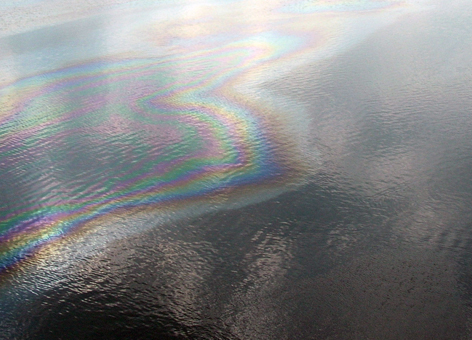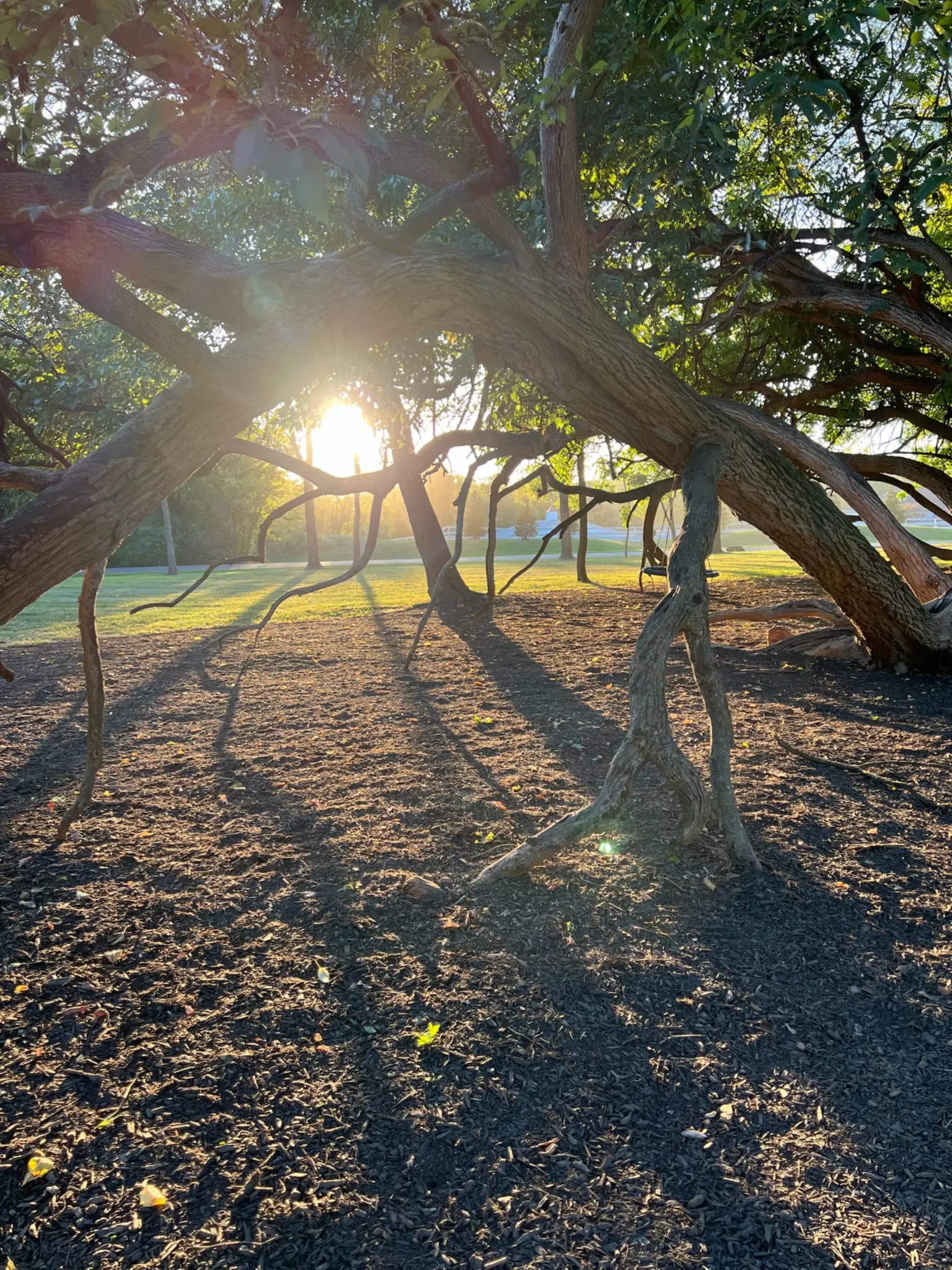If you’ve noticed a strange oily, rainbow-like sheen on local creeks, ponds, or drainage areas from Upper Makefield through Tinicum Township, you’re not alone—and you’re right to be curious. With recent headlines highlighting a jet fuel pipeline leak in Upper Makefield Township (DEP Source), many residents in Solebury, Plumstead, Buckingham, and Tinicum are wondering:
What is that oily sheen on the water in Upper Bucks County?
This article by Jon Kontz, Founder of Plant Design Group will help you determine what that sheen is, whether it’s dangerous, and how to identify the difference between pollution and natural biological activity.
Why Are We Seeing Sheens Now?
In April 2025, a pipeline carrying jet fuel ruptured in Upper Makefield Township, sparking legitimate concerns about water quality throughout the nearby areas—including Solebury Township, Plumsteadville, Point Pleasant, Lumberville, and Tinicum. With more people inspecting local waterways and backyard springs, there’s increased reporting of iridescent films or oil-like sheens on the surface of the water.
We spoke with the Department of Environmental Protection’s Dustin Lipik, Licensed Professional Geologist and case manager for the April pipe rupture, and he provided some helpful information and resources for people who may be concerned about their well water being contaminated. Though there have only been about six or seven confirmed cases of contamination since April, states Dustin, his department is more than willing and able to come out directly to a property that may be concerned that they’ve been impacted by the fuel leak, and that he personally will usually make the call. He stated that the residents in the surrounding area have all been provided, by multiple channels, including the Uppermakefield township themselves, resources and hotlines to use if there is any suspicion of fuel. He mentioned that smell (vs. just an oily sheen) is a very reliable test for homeowners themselves, but that his department is performing top-notch tests to ensure safety for anyone concerned.
Here are the local resources Lipik provided:
- Energy Transfer/Sunoco
- Email: uppermakefieldresponse@energytransfer.com
- Community Hotline: 1-877-397-3383
- Website: Upper Makefield Response
- Pennsylvania DEP
- Email: RA-EPUMPIPELINE@pa.gov
- Phone: 484-250-5991 or 866-255-5158
- Website: DEP’s Upper Makefield Pipeline Website
- Upper Makefield Township
Three Common Types of Iridescent Sheens
Not all sheens, however, are harmful. Here’s how to tell which kind you’re seeing in our local waterways:
1. Petroleum-Based Sheen (From Spills or Fuel Contamination)
This is the one to watch out for. It can result from:
- Leaked fuel (as in the Upper Makefield incident)
- Runoff from roads or machinery
- Illegal dumping

(Photograph from NOAA.gov)
How to Identify It:
- Smell: Strong odor like diesel, oil, or gasoline.
- Stick Test: When disturbed with a stick, the sheen quickly reforms.

(Photograph from Backyardnature.net)
2. Bacterial Sheen (From Iron Bacteria)
A common, natural phenomenon in Upper Bucks County due to our region’s iron-rich clay soil, especially along the creeks of Solebury, Plumstead, and Tinicum.
Key Signs:
- Rainbow-colored sheen with no odor.
- Breaks into “platelets” and stays separated when disturbed with a stick or rock.
- Caused by bacteria (like Thiobacillus ferrooxidans) that oxidize iron in slow moving or stagnant groundwater when it meets the surface.
According to the Minnesota Pollution Control Agency:
“When a stick is poked into a bacterial sheen… it will break into small platelets. In contrast, a petroleum sheen will quickly try to reform.”
Source & Testing Guide
3. Organic Sheen (From Decomposing Plant Matter)
Plumsteadville, Lumberville, and Erwinna have groundwater and seasonal areas of standing water that naturally contain plants in the process of breaking down.
Organic sheens may appear oily but:
- Are odorless
- Occur in stagnant areas or shaded creeks and standing water
- Often accompany leaf debris, algae or decomposing plants or roots below the surface
What’s Actually Causing the Sheen in Upper Makefield Through Tinicum?
The majority of “oily sheens” residents are seeing are not oil, but rather due to:
- Iron bacteria reacting with oxygen in iron-rich clay, common in the area.
- Natural decomposition of leaves and organic material.
- Microbial activity in slow-moving or stagnant water.
According to research on bog iron formation:
“The iron in the water is oxidized by dissolved oxygen or by enzyme catalysis from iron bacteria… These bacteria leave behind oily-looking films on the surface of water.”
Learn More on Bog Iron & Iron Bacteria
Fun Fact:
- Red clay = Iron-rich in its pre-oxidized state.
- Grey clay = Oxidized or rich in organic material.
How to Tell If the Sheen Is Dangerous: The Stick & Smell Test
If you see a sheen and want to identify whether it’s petroleum-based or natural, try this quick field test:
The Stick Test
- Bacterial or organic sheen: Breaks into rainbow “platelets,” does not reform.
- Petroleum sheen: Smears, sticks together, and reforms quickly.
The Smell Test
- Bacterial or plant-based sheen: Odorless.
- Oil or fuel-based sheen: Smells like gas, diesel, or motor oil.
If it smells like fuel or the sheen behaves like oil, report it immediately to the PA DEP.
What to Do If You Suspect an Oil Spill
If you’re in Upper Makefield, Solebury, Point Pleasant, or Tinicum and suspect a petroleum spill:
- Contact the PA Department of Environmental Protection.
- Avoid letting pets or livestock drink from the area.
- Note the location, appearance, and smell before it disappears.
Final Thoughts: Stay Informed, Stay Safe
For residents between Upper Makefield and Tinicum Township, the oily sheen on your creek or pond water is most likely natural—a result of iron bacteria or plant decomposition, not petroleum contamination.
But in light of the jet fuel spill, it’s smart to observe and report anything unusual. Use the stick and smell test. Educate your neighbors. And know that a rainbow sheen doesn’t always mean pollution—it could just be your land’s rich natural chemistry at work.
Protect Your Local Watershed
Know what’s natural. Know what’s not.
Share this guide by Plant Design Group with your neighbors in Upper Makefield, Solebury, Plumstead, and Tinicum to help our community stay informed and proactive about protecting our shared environment.



